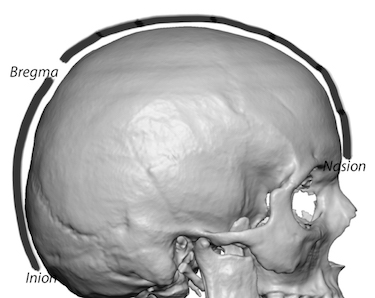In the well known architectural principle ‘form follows function’ the shape of a building should relate to its intended purpose. This equally applies to anatomy where the form of a body part relates to its function. The skull is a great example of this principle as its size and shape has evolved to accommodate the brain within and its multiple sensory organs. But does the shape of the human skull reflect more…and does it also have a mathematical basis for what makes a better looking skull shape?
The Golden ratio, and its number 1.618, is well known and has been demonstrated in many mathematical, architectural, artistic and biologic examples. Its appeal and the belief that many or all life forms are built around this mathematical principle is irresistible and appeals to our basic nature to find a rationale basis for beauty in nature. While the Golden ratio has been extensively applied to the face, it has been less so to the head and specifically that of the skull.

The authors report that in humans these 2 ratios coincide (1.64 ± 0.04 and 1.57 ± 0.10) and approximate ?. In the other 6 mammalian species, these 2 ratios were not only different, but also unique to each species. The difference between the ratios showed a trend toward convergence on ? correlating with species complexity.
Their findings in humans is that the ratio of the nasioiniac arc over the parieto-occipital arc as well as that of the parieto-occipital arc over the frontal arc approximately coincide at 1.6.(1.64 and 1.57) In addition humans have the smallest difference between the 2 measured cranial ratios of the 7 species studied. In the other 6 mammalian species the two ratios were different as well as species specific. The observation was that as the species became more complex the closer the profile shape and arc ratios of the skull became closer to the Golden Ratio.

Dr. Barry Eppley
Indianapolis, Indiana



